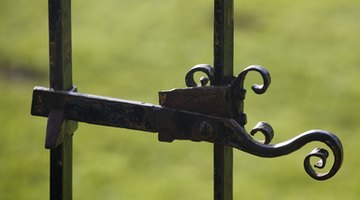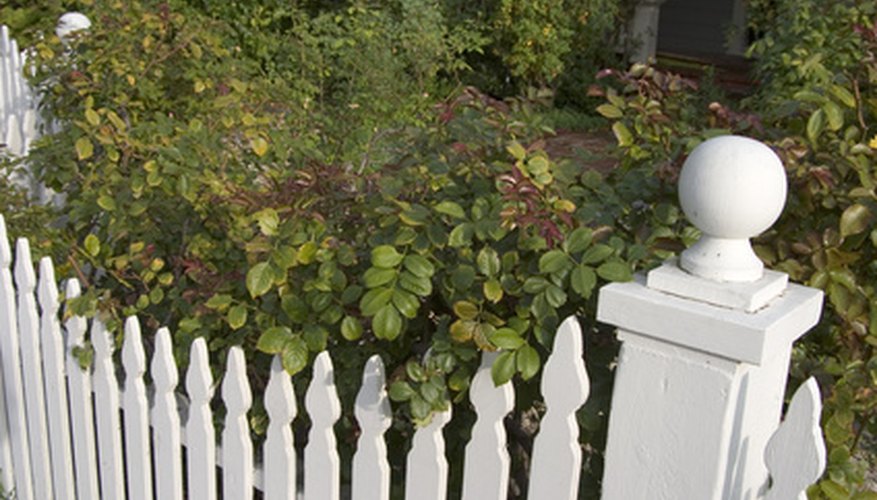A gate left open can be annoying as well as dangerous to children, pets and garden plants. way back when, however, they had a simple gate closer made up of chains and cannonballs. You can make a similar gate closer based on the same basic concepts of physics with modern items and no more skill than the ability to tie a few simple knots.

Cut a length of rope 30 cm (1 foot) longer than the width of your gate.
Thread the rope through the handle of the kettlebell. Kettlebells are weights found in the fitness or sporting goods aisles of department stores or at sporting goods shops.

Use a slipknot to anchor the kettlebell in the centre of the length of rope.
- A gate left open can be annoying as well as dangerous to children, pets and garden plants.
- Use a slipknot to anchor the kettlebell in the centre of the length of rope.

Tie one end of the rope to the top centre of the gate. If there is no obvious place to tie the rope, you may wish to attach an eye bolt to the inside of the gate and fasten the rope to that.
Dig a fence post hole a distance from the hinge post equal to half the width of the gate. An imaginary line between the fence post hole and the hinge post should form a right angle in relationship to the gate, with the hole situated on the side of the fence opposite the direction in which the gate swings.
Insert the fence post in the hole, and secure it with soil or crushed gravel.
Attach the eye bolt near the top of the new fence post on the side closest the fence.
Thread the rope through the eye bolt, and tie it in place. At this point, when the gate is shut the kettlebell should continue to be suspended somewhat above the ground and not rest directly on it. If not, retie the ends of the rope to situate the kettlebell above the ground and exactly in between where it is tied to the gate and tied to the anchoring fence post.
- Tie one end of the rope to the top centre of the gate.
- If not, retie the ends of the rope to situate the kettlebell above the ground and exactly in between where it is tied to the gate and tied to the anchoring fence post.
TIP
A post hole digger often can be rented from a hardware or DIY centre. It's possible to use a spade instead, but keep in mind that a 1.2 m (4 foot) fence post requires 60 cm (2 feet) of post beneath the ground surface for stability. If the gate is in a corner near a wall or fence perpendicular to it, you may not need the anchoring fence post. Secure that end of the rope to the wall (if needed by attaching an eye bolt first) or fence instead. A trellis can be built between the added fence post and the gate to dress up the closure device. Traditionally, chains were used in place of the rope. If you are comfortable working with metal, chains give a more polished appearance.
WARNING
Sometimes the weight can slam the gate shut too forcefully for comfort. Adjusting the distance of the anchoring post so that it is nearer to the gate's hinge post might temper that. Also consider adding a stop block to lessen the force.
